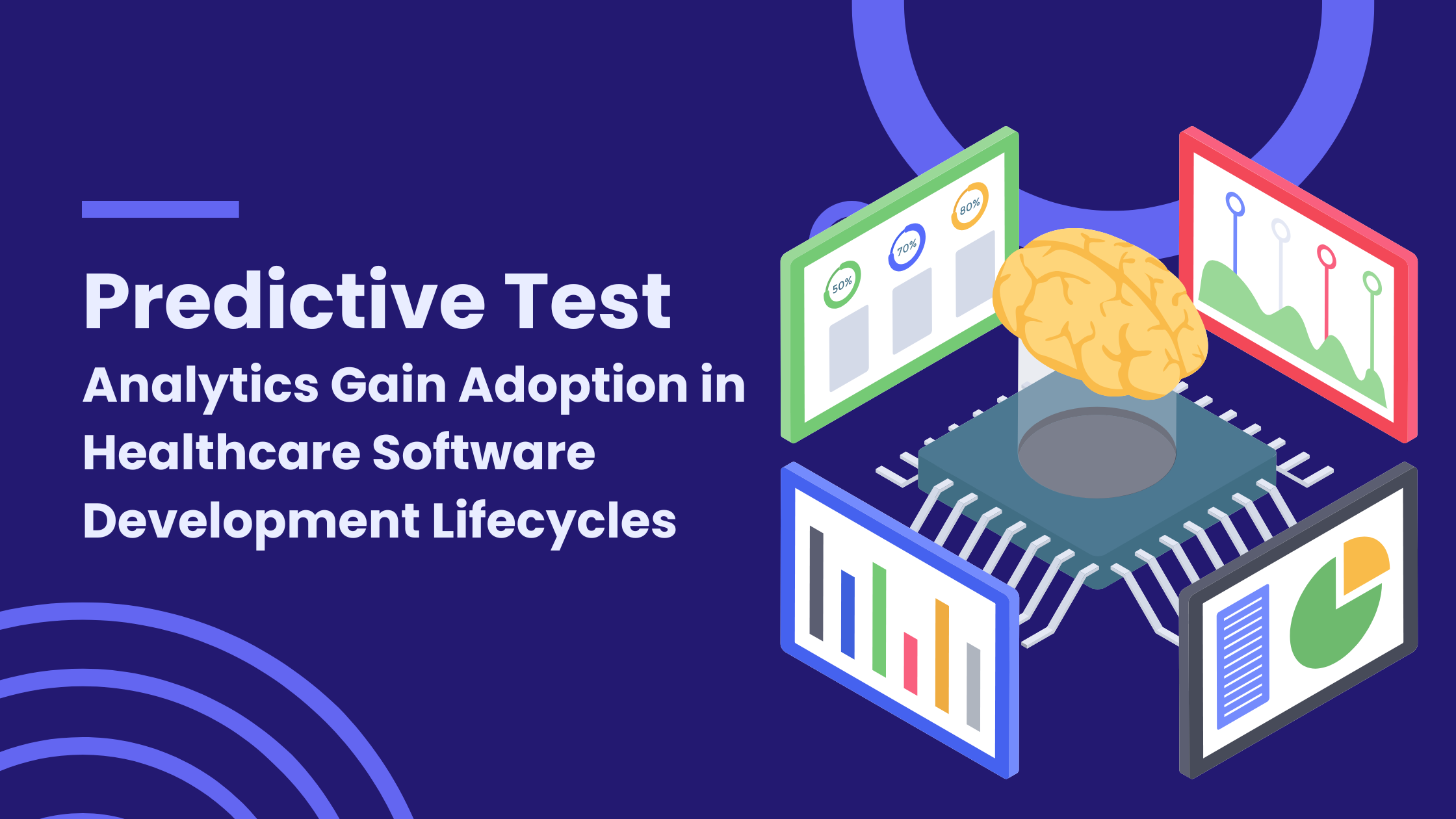Quick Listen:
Predictive test analytics is rapidly gaining traction in healthcare software development lifecycles as organizations seek to improve product quality, accelerate release cycles, and reduce operational risks. In an industry where software reliability directly impacts patient safety and regulatory compliance, traditional testing methods often fall short in keeping up with the complexity and pace of modern development.
Predictive analytics leverages machine learning, historical test data, and real-time metrics to identify high-risk areas in code, prioritize test cases, and forecast potential defects before they reach production. This proactive approach not only enhances the efficiency of quality assurance teams but also enables faster, more confident decision-making throughout the development lifecycle.
By focusing resources on the most impactful tests, healthcare software companies can reduce test cycle times, lower costs, and deliver more reliable products. As the healthcare industry continues its digital transformation, the adoption of predictive test analytics is emerging as a vital component in ensuring robust, scalable, and compliant software systems.
This introduction explores how predictive analytics is reshaping testing strategies and driving innovation in healthcare software development.
1. Revolutionizing Healthcare Testing
The healthcare industry is undergoing a significant transformation, and predictive analytics is at the forefront of this change. By leveraging advanced data analysis, predictive test analytics are optimizing healthcare software development. These tools anticipate potential issues before they arise, offering solutions that improve both the quality and efficiency of healthcare systems. As healthcare software grows increasingly complex, integrating predictive test analytics becomes crucial to keep up with the rising demands.
2. Benefits of Predictive Test Analytics
Predictive analytics in healthcare testing offers several key benefits. One of the most impactful is the enhanced efficiency it provides throughout the software development lifecycle. By predicting potential system failures and performance bottlenecks early, teams can implement fixes before they disrupt operations. Reduced errors is another significant benefit, as predictive models identify areas where human mistakes are most likely, allowing for automated solutions to rectify them. This not only ensures smoother operation but also leads to improved patient outcomes, as software systems are more reliable and accurate in their real-time functioning.
Predictive analytics can help healthcare providers cut costs and increase operational efficiencies while enhancing the quality of care.
3. Implementation Challenges
Despite the clear benefits, the implementation of predictive analytics in healthcare software testing is not without its challenges. One of the primary hurdles is data quality. Healthcare data is vast and varied, and ensuring that the data fed into predictive models is accurate and consistent is essential for successful outcomes. Inconsistent or incomplete data can lead to flawed predictions, undermining the effectiveness of these tools.
Another challenge lies in the integration of predictive analytics with existing healthcare systems. Many healthcare organizations still rely on legacy systems that were not designed with modern data analysis tools in mind. The complexity of merging new predictive technologies with these outdated platforms can create delays and increase costs.
4. Best Practices for Adoption
To overcome these challenges, healthcare providers can adopt several best practices. Leveraging AI for predictive modeling and continuous testing is crucial. AI-powered models can learn from vast amounts of data and improve over time, offering increasingly accurate predictions and actionable insights. It's also essential for teams to adopt agile methodologies that allow for continuous feedback and iterative improvements, ensuring that predictive analytics are used effectively throughout the software development lifecycle.
Collaboration between IT teams and healthcare professionals is another key factor in successful adoption. Integrating the insights of both sides helps ensure that the analytics are not only technically sound but also aligned with the practical needs of healthcare providers and patients.
The Future of Healthcare Software
Looking ahead, predictive test analytics have the potential to radically transform healthcare software development. As these tools continue to evolve, they will become more intuitive and capable of identifying deeper patterns in patient data, helping healthcare organizations to proactively address issues before they become critical. The future of healthcare software is not only about handling more data but doing so in a way that enhances both operational efficiency and patient care.
With the increasing adoption of predictive analytics, healthcare providers will be able to deliver safer, more reliable software, ultimately improving the quality of care and outcomes for patients worldwide.
You may also be interested in: CI/CD in Healthcare in Agile Development | Best Tips
Book a Demo and experience ContextQA testing tool in action with a complimentary, no-obligation session tailored to your business needs.
